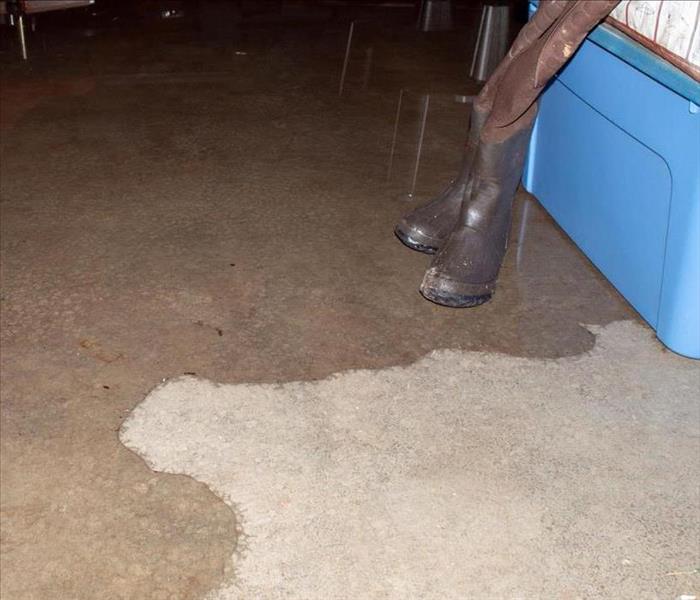Important Facts To Know About Sewage Cleanup
10/6/2021 (Permalink)
When you have raw sewage infiltrate your West Valley City, UT, commercial building, you can't treat it like an ordinary flood. Various situations can cause a sewage problem, such as a flooded toilet, clogged lines, or damage from tree roots. Whatever the cause, from start to finish, there are precautions that you need to take during the sewage cleanup to protect everyone involved as well as the building and contents.
How To Safely Clean After a Sewer Backup
1. Prioritize Safety
Block off the area so no one can enter, aside from people cleaning the room. Children, people with medical issues, and pets should stay out. Also, before anyone goes into the area, make sure that there are no electronics or appliances in the standing water, as an electric current could be flowing through the water. This issue can also occur when electrical outlets are exposed to the water. Turn off the building's power before stepping into the area.
2. Wear Personal Protective Equipment
Before going into the affected area, wear PPE to protect yourself from the contaminants. Safety goggles, a face mask, rubber gloves, and boots are musts. Water-resistant coveralls are also recommended.
3. Create a Barrier
Close off the contaminated area from the rest of the building. Blocking off the room can reduce the chance of cross-contamination of debris and airborne particles, and it works as a barrier to keep everyone out.
4. Extract Standing Water
Once you've identified the problem and stopped it, it's essential to remove all of the standing water. The safest and most efficient way of doing this is by using a wet/dry vacuum.
5. Remove Contaminated Materials
Remove all contaminated materials that can be removed from the area. During sewage cleanup, you must bag anything that isn't salvageable for the trash and dispose of it immediately. Items that can be adequately cleaned and sanitized should be sealed in bags and placed outside to handle later.
6. Remove Debris
After the area is clear of obstacles, it's time to clear the area of as much contaminated material as possible. You will probably have debris and could even have sludge. This material should be removed with a shovel, placed in heavy-duty plastic trash bags, and then immediately disposed of. If the flooring is soaked, you'll need to remove it, particularly if it's carpet. Wet areas of drywall will also need to be removed and thrown away.
7. Clean and Disinfect Everything
Clean and disinfect every affected surface. This washing is imperative to avoid serious issues, such as cross-contamination and mold growth. To ensure the job is performed safely and correctly, it's best to hire water damage, remediation professionals.
8. Dry Everything
Dry everything as quickly as possible to prevent mold growth. Mold can begin growing in as little as 24 hours, so it's critical to dry the area and contents thoroughly. You can use fans, dehumidifiers, and heat.
When you've had a sewer backup, taking specific steps in the raw sewage cleanup process is vital. By being thorough with this job, you'll protect not only your employees but also your building and its contents.






 24/7 Emergency Service
24/7 Emergency Service
